The best way to make money online: How can you navigate the vast sea of online opportunities to find ones that are not only lucrative but also aligned with your skills and passions? And most importantly, what strategies can you employ to maximize your earning potential while minimizing risks?
The internet has revolutionized how we think about work, offering endless possibilities for generating income from the comfort of our homes. From affiliate marketing to freelancing, blogging, and beyond, the digital world is brimming with opportunities to make money. But with so many options, where do you begin? My intention is to guide you through this process, offering insights and advice on how to choose the path that’s right for you.
I strongly believe that the key to unlocking your financial potential online lies in understanding the various avenues available and learning how to leverage them effectively. It’s not just about choosing the most popular option but finding the one that resonates with your personal goals and strengths.
In this guide, we’ll explore the best ways to make money online, providing you with the knowledge and tools you need to start your journey towards financial freedom. Whether you’re looking to supplement your income or embark on a new career, I’m here to help you navigate the path to online success.
Table of Contents
Revolutionize Your Income with Affiliate Marketing
Did you know that over 80% of brands have affiliate programs? This staggering statistic underscores the vast potential of affiliate marketing as a primary avenue for generating online income. It’s a field that’s continually growing, offering endless opportunities for those looking to revolutionize their income. The beauty of affiliate marketing lies in its accessibility; it’s a strategy that can be embarked upon with minimal upfront investment, yet the potential returns are significant.
Affiliate marketing allows you to earn a commission by promoting other people’s or companies’ products. The key to success in this realm is choosing the right affiliate programs and effectively driving traffic to your affiliate links. It’s not just about signing up for the most popular programs; it’s about finding products that resonate with your audience and align with your content. My advice to those starting out is to focus on niches you are passionate about. This passion translates into more authentic and engaging content, which is crucial for driving conversions.
From my perspective, one of the most appealing aspects of affiliate marketing is its flexibility. You can integrate affiliate links into blog posts, social media platforms, emails, and more, allowing for a diverse range of strategies to reach your audience. However, success doesn’t come overnight. It requires patience, perseverance, and a willingness to learn and adapt strategies to find what works best for your unique audience.
Choosing the Right Affiliate Programs: A Step-by-Step Guide
When it comes to affiliate marketing, the first step—choosing the right affiliate programs—is crucial. My suggestion is to start by identifying your niche and understanding your audience’s interests and needs. This knowledge is foundational in selecting affiliate programs that offer products or services your audience will genuinely be interested in. Look for programs with a reputable history, favorable commission rates, and high-quality products.
Next, consider the support provided by the affiliate program. Good affiliate programs offer excellent support to their affiliates, providing resources like promotional materials and sales tips. This support can be invaluable in helping you effectively market their products. From my point of view, an affiliate program that invests in the success of its affiliates is always a better choice.
Finally, read the terms and conditions of the affiliate program carefully. Understanding the payment structure, cookie duration, and any restrictions on marketing methods will help you avoid any potential issues down the line. My recommendation is to always have a clear picture of what you’re signing up for, ensuring it aligns with your content strategy and ethical guidelines.
Affiliate Marketing: Secrets to Driving Traffic and Boosting Sales
Driving traffic to your affiliate links is the cornerstone of successful affiliate marketing. One effective strategy, in my opinion, is content marketing. Creating high-quality, valuable content that addresses your audience’s problems and interests can naturally incorporate affiliate links, guiding your audience towards making a purchase. Remember, the more value you provide, the more likely your audience is to trust your recommendations.
Social media is another powerful tool in your arsenal. Platforms like Instagram, Pinterest, and Facebook allow for creative ways to showcase products and engage with your audience. From my perspective, the key here is consistency and engagement. Regular posts, stories, and interactive sessions can significantly boost your visibility and drive traffic to your affiliate links.
Lastly, email marketing remains a highly effective method for promoting affiliate products. By building a list of subscribers interested in your niche, you can send targeted promotions directly to their inbox. This direct line of communication can be incredibly potent when used correctly. My advice is to balance promotional content with lots of value to keep your audience engaged and open to your recommendations.
Maximize Earnings Through Effective Email Marketing
“Email has an ability many channels don’t: creating valuable, personal touches—at scale.” This quotation encapsulates the essence of why email marketing remains a cornerstone of digital marketing strategies. It’s a uniquely personal way to reach your target audience, offering unmatched opportunities for customization and engagement. By effectively harnessing the power of email marketing, businesses and individuals alike can see a significant boost in their online earnings.
Email marketing, when done correctly, can be an incredibly powerful tool to increase engagement, build loyalty, and, most importantly, drive sales. It allows for direct communication with your audience, providing them with valuable content while gently guiding them towards making a purchase.
The key is to deliver emails that are not only informative but also engaging and relevant to the recipient’s interests and needs. From my perspective, the success of your email marketing efforts hinges on your ability to craft messages that resonate with your audience on a personal level.
Building a robust email list is just the beginning. The real challenge lies in maintaining the interest of your subscribers and converting that interest into action. This requires a deep understanding of your audience’s preferences and behaviors.
By segmenting your list and tailoring your messages to different segments, you can significantly increase the relevance and effectiveness of your campaigns. In my experience, personalized emails that address the recipient’s specific needs and interests have a much higher conversion rate than generic blasts.
Email Marketing Recommendations
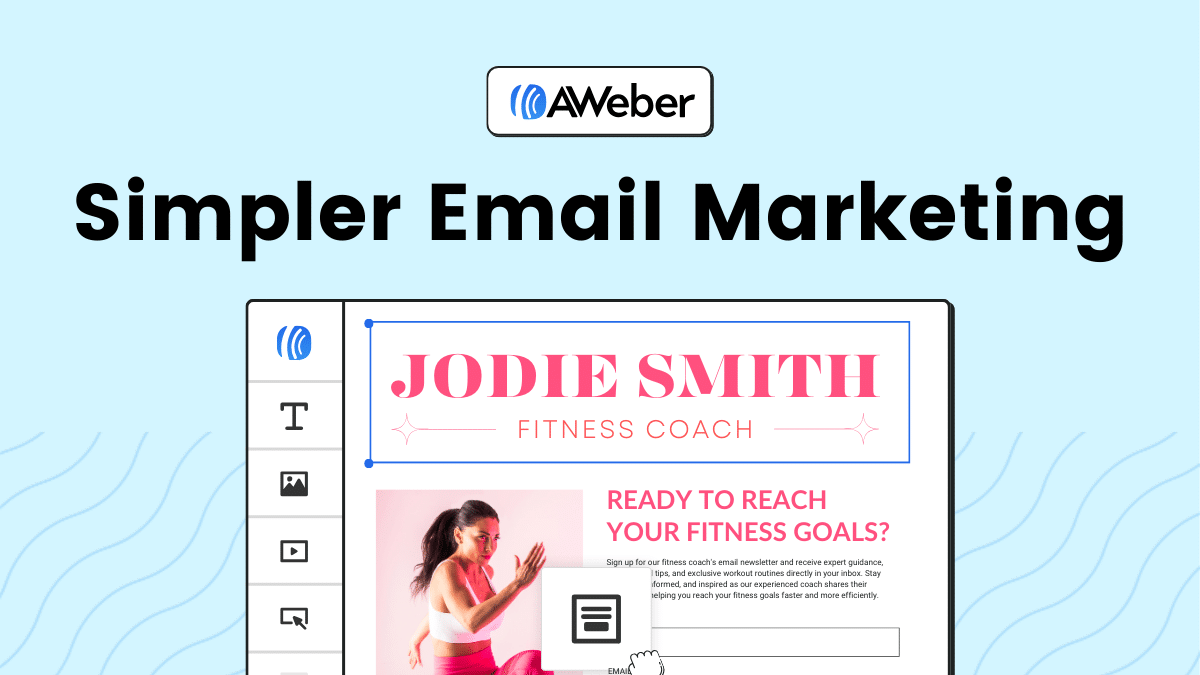 Aweber
| 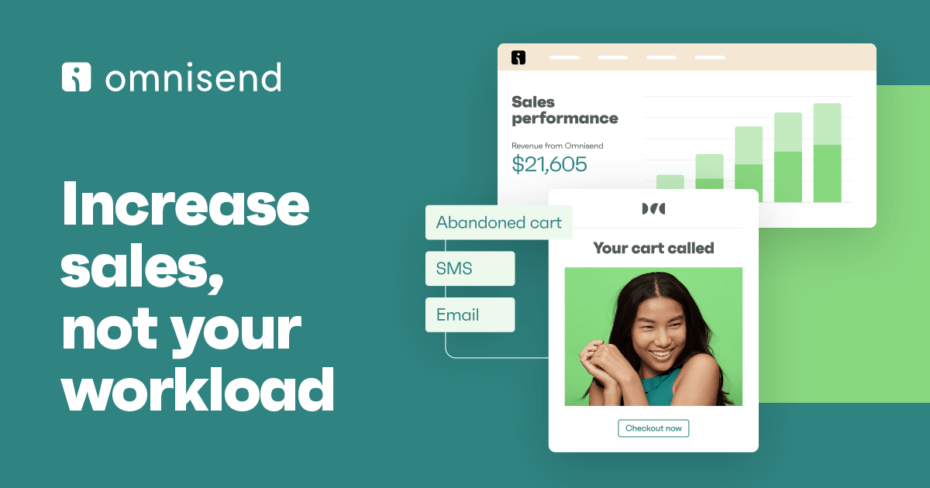 Omnisend
| 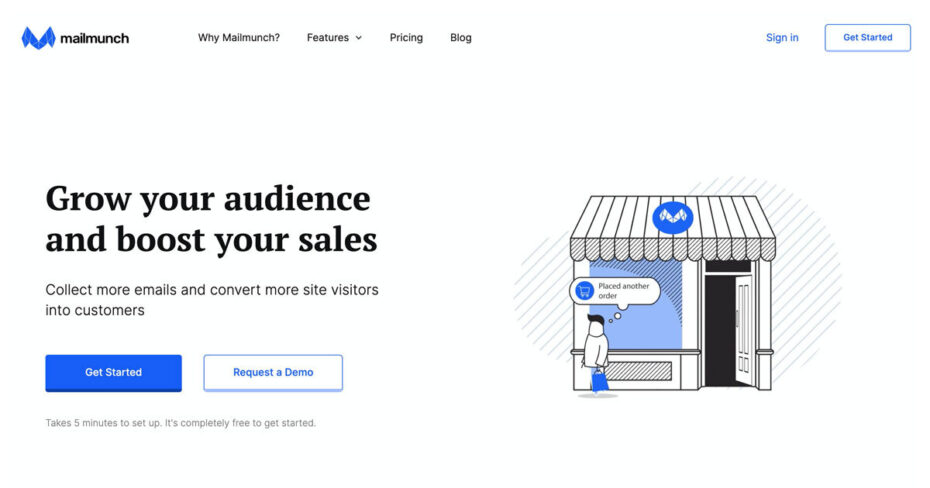 Mailmunch
|
Crafting Irresistible Emails That Convert: Strategies and Tips
Creating emails that recipients are excited to open and read is an art. The subject line is your first impression and, as such, should be compelling and spark curiosity. I recommend spending as much time crafting your subject line as you do on the email content itself. A well-thought-out subject line can make the difference between an opened email and one that’s ignored.
Once you’ve got the recipient’s attention, the next step is to deliver value. This can be in the form of insightful information, a helpful tip, or an exclusive offer. The content of your email should be concise and to the point, with a clear call to action (CTA). From my point of view, the CTA is crucial; it guides the recipient on what to do next, whether that’s making a purchase, signing up for a webinar, or visiting your website.
The design of your email also plays a significant role in its effectiveness. A clean, visually appealing layout that’s easy to read on both desktop and mobile devices is essential. My suggestion is to use images sparingly and focus on making your message as accessible as possible. Remember, the goal is to engage your readers and encourage them to take action, not overwhelm them with flashy graphics or dense blocks of text.
Nurturing Your Email List for Long-Term Profit
Nurturing your email list is about building relationships rather than pushing for a sale at every opportunity. This long-term strategy focuses on delivering consistent value to your subscribers, thereby establishing trust and loyalty. I believe that the more your audience trusts you, the more likely they are to buy from you when the time is right. It’s about playing the long game, providing relevant content that keeps your audience engaged over time.
Segmentation is key to effective list nurturing. By dividing your list based on subscriber behavior or demographics, you can tailor your content to meet the specific interests of different groups. From my perspective, personalized emails based on segmentation are far more effective in building a connection with your audience.
Finally, it’s essential to keep track of the performance of your email campaigns. Analyzing open rates, click-through rates, and conversions can provide valuable insights into what’s working and what isn’t. This data allows you to refine your strategy and improve the effectiveness of your emails. In my estimation, continuous optimization based on performance metrics is crucial for long-term success in email marketing.
Blogging: A Path to Passive Income
Just as a tree needs the right environment to grow, a blog requires the right niche to flourish and generate income. Blogging has evolved from a mere hobby to a potent vehicle for passive income, drawing parallels with investment strategies where the initial effort can pay dividends for years to come. With the right approach, content, and dedication, blogging can become a significant source of revenue, allowing creators to earn money while they sleep, travel, or engage in other activities.
The journey to successful blogging begins with identifying a niche that is not only personally interesting but also valuable to a specific audience. This alignment is crucial because it determines the blog’s potential to attract a dedicated readership.
I would say, from my perspective, that passion for your chosen niche translates into authenticity and depth in your content, which is essential for building a loyal following. Moreover, a well-defined niche allows bloggers to position themselves as experts, enhancing their credibility and attracting more engaged readers.
Once the niche is established, the focus shifts to producing high-quality, relevant content that resonates with the target audience. Consistency in publishing helps in building a robust content library that not only retains existing readers but also attracts new ones.
My recommendation for aspiring bloggers is to always prioritize value over volume. It’s about creating content that answers questions, solves problems, and provides genuine value to your readers. This approach fosters trust and loyalty, which are the cornerstones of a successful blog that generates passive income.
Finding Your Niche: The Key to Blogging Success
The search for the perfect niche is akin to finding the right key to unlock a treasure chest. It’s the initial step that sets the tone for your blogging journey. The right niche should reflect a harmonious blend of your passions, skills, and market demand. I strongly believe that when you write about topics you are passionate about, your enthusiasm shines through, making your content more engaging and relatable.
To find your niche, start by listing your interests and areas where you have expertise or are willing to learn. Then, conduct market research to identify gaps and opportunities. My advice is to look for niches with an engaged audience but not oversaturated with competitors. This sweet spot is where you can make your mark. Remember, a well-chosen niche not only captivates the interest of a dedicated audience but also opens up avenues for monetization through ads, affiliate marketing, and product sales.
In my estimation, the process of finding and refining your niche is ongoing. As you grow and evolve, so will your blog. Stay attuned to trends within your niche and feedback from your audience. This responsive approach ensures that your blog remains relevant and continues to grow, both in content quality and readership.
SEO for Bloggers: Tips to Increase Visibility and Traffic
In the vast ocean of online content, SEO is the beacon that guides readers to your blog. Understanding and implementing SEO strategies is crucial for bloggers aiming to increase their site’s visibility and attract more traffic. From my point of view, SEO for bloggers begins with keyword research. Identifying the right keywords that your target audience is searching for allows you to craft content that meets their needs.
On-page SEO tactics, such as optimizing your titles, headings, and meta descriptions with relevant keywords, play a significant role in improving your blog’s search rankings. I recommend ensuring that your content is not only keyword-rich but also provides value, as this encourages longer visit durations and reduces bounce rates, both of which are favorable for SEO.
Lastly, don’t overlook the importance of building a network of backlinks. High-quality, relevant backlinks from authoritative sites can significantly boost your blog’s authority and search rankings.
My suggestion is to focus on creating compelling content that naturally attracts backlinks and to engage in guest blogging on reputable sites within your niche. Remember, SEO is a marathon, not a sprint. Patience and persistence in applying these SEO tips can dramatically increase your blog’s visibility and traffic over time.
Dropshipping: Start Your E-commerce Empire with Minimal Investment
It might come as a surprise, but many of the e-commerce stores you browse daily operate on a dropshipping model, where the store owner never holds inventory. This model has revolutionized the e-commerce industry, allowing entrepreneurs to start their own online stores with minimal upfront investment. Unlike traditional retail, dropshipping offers a unique opportunity to launch an e-commerce empire without the need for significant capital, warehousing, or logistics management.
Dropshipping allows individuals to act as intermediaries between suppliers and customers, selling products without the need to stock inventory. This model significantly reduces the barriers to entry for aspiring e-commerce entrepreneurs.
From my point of view, the key to success in dropshipping is choosing the right niche and products that not only have a high demand but also offer good profit margins. It’s about matching unique products with the right audience, creating a win-win situation for both the store owner and the customer.
Creating a successful dropshipping business also hinges on building strong relationships with reliable suppliers. A dependable supplier ensures product quality and timely delivery, which are crucial for customer satisfaction and repeat business. My recommendation for anyone considering dropshipping is to thoroughly research suppliers and even order samples to ensure product quality. Remember, your brand’s reputation is on the line with every sale, so partnering with the right suppliers is paramount.
Dropshipping Sites Recommendations
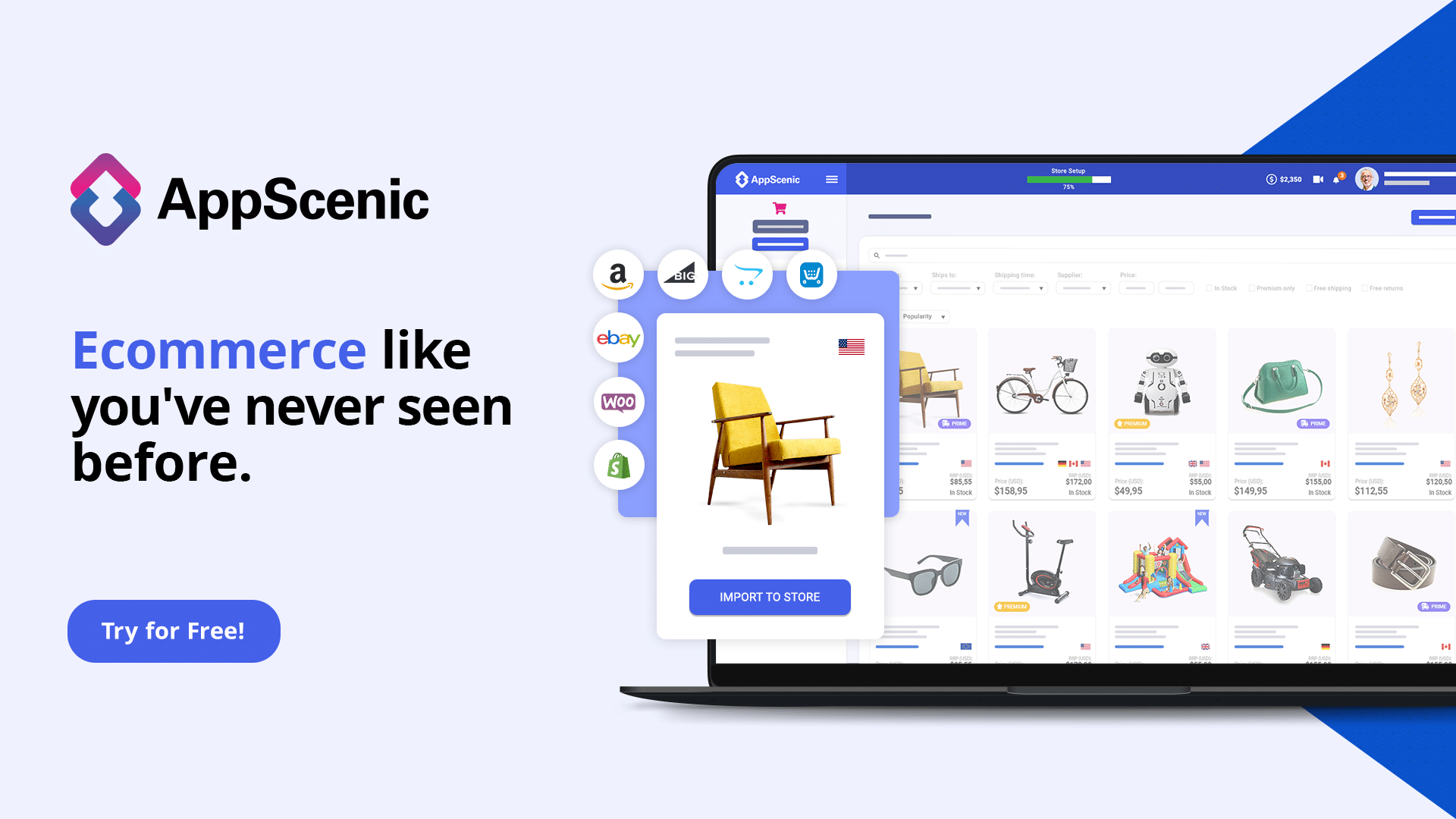 Appscenic
| 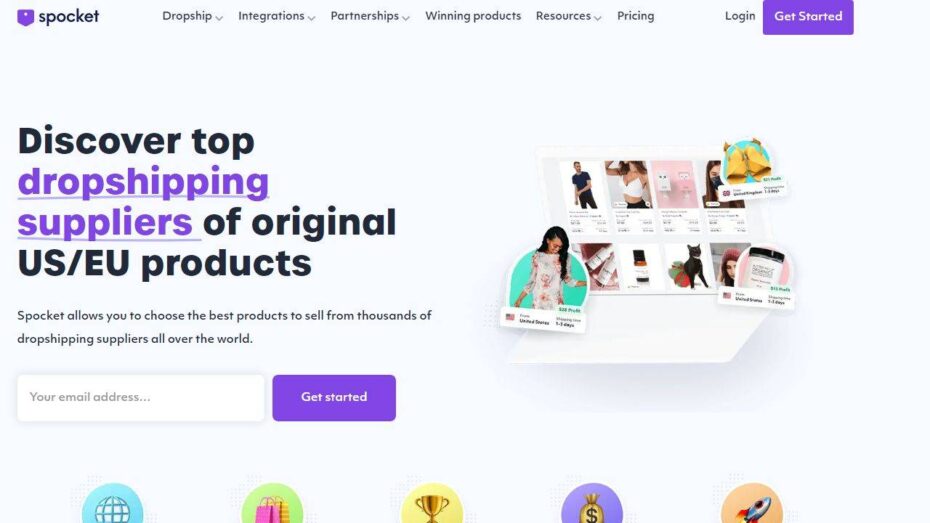 Spocket
|
Selecting Profitable Products for Your Dropshipping Business
The cornerstone of a thriving dropshipping business is the selection of profitable products. This process might seem daunting, but with the right strategy, it can be simplified. I suggest starting by identifying trending products through market research tools and social media platforms. It’s not just about what’s popular, though; you need to consider the competition and profit margins. Selecting a niche with less competition and higher demand increases the likelihood of your products standing out in the market.
Another crucial aspect is understanding your target audience. What are their needs, interests, and shopping behavior? This knowledge can guide your product selection process, ensuring that you choose items that resonate with your potential customers. From my perspective, the more aligned your product offerings are with your audience’s preferences, the higher your chances of conversion and repeat business.
Lastly, consider the logistics of shipping and supplier reliability when choosing products. My advice is to opt for products that are not only profitable but also easy to ship and have consistent availability from suppliers. This foresight helps in maintaining smooth operations and a positive customer experience, which are vital for the long-term success of your dropshipping business.
Dropshipping Success: Building a High-Converting Website
A high-converting website is your primary tool for attracting and retaining customers in the dropshipping business. The design of your website should not only be visually appealing but also user-friendly. It should be easy for visitors to navigate, search for products, and complete purchases. From my experience, a simple, clean design with high-quality product images and detailed descriptions can significantly enhance user experience and conversion rates.
Another critical factor is optimizing your website for search engines. SEO practices such as using relevant keywords in your product descriptions and titles, optimizing images, and ensuring fast loading speeds can improve your site’s visibility and attract more traffic. My recommendation is to also invest in mobile optimization, as a significant portion of online shopping is done via smartphones.
Engagement and trust are crucial for converting visitors into customers. Implementing elements like customer reviews, secure payment options, and clear contact information can build trust. Additionally, consider using email marketing and retargeting ads to keep potential customers engaged and encourage them to complete their purchases. Remember, the goal is to make the shopping experience as seamless and enjoyable as possible, which in turn, will help maximize conversions and establish a loyal customer base for your dropshipping business.
Freelancing: Turn Your Skills into a Lucrative Business
While it’s true that the freelancing market is becoming increasingly competitive, the demand for skilled professionals across various industries has never been higher. This burgeoning demand presents a golden opportunity for individuals looking to turn their skills into a lucrative business. The freedom and flexibility that come with freelancing are unmatched, but it requires dedication, professionalism, and, most importantly, a strategic approach to stand out in the crowded marketplace.
The first step to building a successful freelancing career is to leverage your unique skills. In today’s digital age, skills in areas such as web development, digital marketing, graphic design, and content writing are in high demand. However, it’s not just about having the right skills; it’s also about continuously upgrading and expanding your skillset to stay relevant.
I believe that lifelong learning and adaptability are the keys to longevity and success in the freelancing world. Keeping an eye on industry trends and emerging technologies can help you anticipate market needs and position yourself as a go-to expert in your field.
Another critical aspect of freelancing is building a strong personal brand. This involves not just showcasing your work but also communicating your unique value proposition—what makes you different from others in your field.
From my perspective, building a robust online presence through a professional website and active social media channels is crucial. These platforms offer a window into your professional ethos and achievements, making it easier for potential clients to find and trust you with their projects.
Identifying High-Demand Freelance Skills in Today’s Market
To thrive as a freelancer, it’s essential to align your skillset with the market’s demands. High-demand skills such as software development, digital marketing, graphic design, and copywriting are not just trends but reflections of the digital transformation shaping businesses worldwide. From my point of view, specializing in these areas can significantly enhance your visibility and attractiveness to potential clients.
However, identifying high-demand skills goes beyond just keeping tabs on job boards. I recommend engaging with online communities, attending industry conferences, and enrolling in relevant courses. This proactive approach not only helps in pinpointing which skills are most sought after but also provides invaluable networking opportunities. Networking, after all, can often lead to unexpected job opportunities and collaborations that can propel your freelance career forward.
Adaptability is crucial in the ever-evolving freelance market. As industries evolve, so do the skills they require. Therefore, my advice to freelancers is to embrace continuous learning as part of their career strategy. Investing time and resources in learning new skills or deepening existing ones can set you apart in a competitive field, ensuring that you remain a valuable asset to your clients.
Marketing Yourself as a Freelancer: Strategies That Work
Marketing yourself effectively is critical in translating your skills into a successful freelance business. The cornerstone of effective self-marketing is a well-crafted portfolio that showcases your best work. This portfolio should not only highlight your skills and accomplishments but also reflect your personal brand and professional approach. I strongly believe that a portfolio is an essential tool for demonstrating your expertise and attracting the right clients.
Social media and professional networking sites offer powerful platforms for promoting your freelance services. Regularly sharing your insights, project updates, and success stories can help build your reputation as an expert in your field. My suggestion is to engage actively with your industry community online. Commenting on relevant posts, participating in discussions, and sharing valuable content can increase your visibility and establish your credibility.
Lastly, client testimonials and word-of-mouth recommendations are invaluable. Satisfied clients are often happy to refer you to others, providing a powerful endorsement of your skills and professionalism. I recommend encouraging your clients to leave reviews or testimonials, which you can then feature on your website or social media profiles. In my estimation, nothing speaks louder than the praise of those you’ve successfully worked with, helping to build trust with potential clients and grow your freelancing business.
Educate and Earn: Creating and Selling Online Courses
What if I told you that your knowledge and expertise could become a source of income, empowering others while filling your wallet? In today’s digital age, creating and selling online courses has emerged as a powerful way to share your expertise with a global audience. With the demand for online learning skyrocketing, educators and experts from various fields have a unique opportunity to monetize their skills. But how do you transform your knowledge into a compelling online course that sells?
The success of an online course hinges on its ability to engage and educate. To achieve this, you must create content that is not only informative but also engaging and interactive. This means breaking down complex topics into digestible segments, incorporating multimedia elements like videos and infographics, and providing practical assignments that allow learners to apply what they’ve learned. From my experience, courses that encourage active learning and offer personalized feedback tend to have higher completion rates and more satisfied students.
However, creating great content is just the first step. To truly succeed, you must also master the art of selling your course. This involves understanding your target audience, crafting a compelling value proposition, and leveraging the right marketing channels to reach potential learners. My advice to course creators is to focus on building a community around their area of expertise. Engaging with your audience through social media, webinars, and email newsletters can help build trust and interest in your courses.
Crafting Compelling Content for Your Online Course
Creating compelling content for your online course starts with a deep understanding of your target audience’s needs and learning preferences. What problems are they trying to solve? What skills are they looking to acquire? Answering these questions can guide you in designing a curriculum that addresses these needs directly. I recommend starting with a clear outline of your course, defining learning objectives for each section, and ensuring that each piece of content aligns with these objectives.
Interactive and multimedia elements can significantly enhance the learning experience, making complex information easier to understand and more engaging. Incorporating videos, quizzes, and interactive assignments not only breaks up the monotony of reading but also caters to different learning styles. From my point of view, the more interactive and varied your content, the more engaging your course will be.
Feedback and revision are also critical components of crafting compelling content. I would say that it’s essential to seek feedback from peers or a small group of your target audience before launching. This feedback can provide valuable insights into how your content is received and where improvements can be made. According to my estimation, courses that are refined based on user feedback tend to perform better in terms of student satisfaction and completion rates.
Marketing Your Online Course for Maximum Reach and Profit
Once your course is created, the next challenge is marketing it effectively to reach potential learners. The first step is to define your unique selling proposition (USP). What makes your course different from others on the market? Highlighting this in your marketing materials can help attract students looking for what you offer. I believe that a strong USP, coupled with compelling testimonials and success stories, can significantly increase your course’s appeal.
Digital marketing strategies, such as content marketing, search engine optimization (SEO), and social media advertising, are powerful tools to promote your online course. Creating valuable content that addresses your target audience’s interests and challenges can attract potential students to your course landing page. My suggestion is to leverage email marketing to nurture leads by offering them free resources related to your course topic, gradually guiding them towards enrollment.
Partnerships and collaborations can also expand your course’s reach. Collaborating with influencers or other educators in your field to co-create content or promote each other’s courses can tap into new audiences. From my perspective, partnerships are a mutually beneficial strategy that can lead to increased enrollments and broader market exposure. In my view, the key to marketing your online course successfully lies in understanding your audience deeply and choosing the right mix of marketing strategies to engage them effectively.
Digital Products: A Goldmine for Creative Entrepreneurs
Did you know that the global e-commerce market for digital goods is expected to continue its rapid growth, reaching new heights each year? This expansion presents a lucrative opportunity for creative entrepreneurs looking to tap into the digital realm. Digital products, ranging from eBooks and courses to software and digital art, offer several advantages, including low overhead costs, the ability to scale, and access to a global market. For those with a knack for creativity and innovation, the digital product space is indeed a goldmine waiting to be explored.
One of the most appealing aspects of selling digital products is the relatively low barrier to entry. Unlike physical products, digital goods don’t require inventory, significantly reducing startup and operational costs. This makes it an ideal venture for entrepreneurs who wish to leverage their skills and knowledge into a profitable online business. From my perspective, the key to success in this space lies in identifying unique and valuable products that resonate with a specific audience.
Moreover, the ability to deliver products instantly and to a global audience amplifies the potential for rapid growth and success. However, success in the digital product market demands more than just a great product; it requires a strategic approach to marketing and sales. My recommendation for newcomers is to focus on building a strong online presence and fostering a community around their brand. This approach not only helps in promoting your products but also establishes trust and credibility with your target audience.
Identifying Lucrative Digital Products to Sell
The first step to carving out your niche in the digital product market is identifying products that have both demand and the potential for profitability. This involves researching market trends, understanding customer pain points, and recognizing gaps that your products can fill. I suggest leveraging online tools and platforms to gain insights into what customers are searching for and discussing in your niche. In my opinion, products that solve specific problems or cater to passionate hobbies tend to perform exceptionally well.
Another key factor in identifying lucrative digital products is understanding your own strengths and passions. From my point of view, the most successful digital products often come from creators who are genuinely passionate about their content. This authenticity translates into more engaging and valuable products, which in turn attracts a more dedicated and loyal customer base. My advice is to blend your expertise and interests with market demands to create products that stand out.
It’s also important to consider the scalability and longevity of the digital products you choose to create. From my perspective, products that can be easily updated and adapted to changing market trends have a higher chance of sustaining long-term success. This could mean creating a series of related eBooks, developing a software that can be updated with new features, or offering a course that evolves with new lessons over time. The goal is to create a product that remains relevant and continues to generate income with minimal ongoing effort.
Strategies for Successfully Selling Digital Products Online
Once you’ve identified your digital product, the next challenge is effectively marketing and selling it online. A crucial strategy for success is creating a compelling landing page that highlights the benefits and unique features of your product. This page should answer any potential questions a buyer might have and make the purchasing process as straightforward as possible. I strongly believe that clear, compelling copy paired with high-quality visuals can significantly increase conversion rates.
Building an email list is another powerful strategy for selling digital products. By offering valuable content or freebies in exchange for email addresses, you can build a list of interested customers to whom you can directly market your products. My recommendation is to use email marketing to nurture these leads by providing additional value, establishing trust, and eventually guiding them towards a purchase. Personalized email campaigns that cater to the interests and needs of your audience can be particularly effective.
Lastly, leveraging social media and content marketing can help raise awareness and drive traffic to your product pages. Creating valuable, shareable content that relates to your product can attract potential customers to your brand. According to my estimation, engaging with your audience through these channels not only promotes your products but also builds a community of followers who are more likely to become customers. I recommend focusing on platforms where your target audience is most active and adopting a consistent, authentic approach to your social media and content marketing efforts.
Web Development: The Backbone of Online Business Success
It’s fascinating to note that as of the latest statistics, over 1.7 billion websites exist, yet this number is constantly evolving as new sites go live and others are retired. This dynamic digital landscape underscores the critical role of web development in today’s online business success. Web development is not just about building websites; it’s about crafting the digital face of a business, ensuring it is functional, user-friendly, and optimized for conversion. The demand for skilled web developers has skyrocketed, as businesses recognize the importance of a strong online presence in achieving their marketing and sales objectives.
Web development encompasses a wide range of skills and technologies, each contributing to the creation of websites and applications that meet the evolving needs of users and businesses alike. From front-end development focusing on user interface and experience to back-end development ensuring server, application, and database interaction, web developers play a pivotal role in bringing digital projects to life. My advice to businesses looking to strengthen their online presence is to invest in professional web development services that can deliver a website tailored to their specific goals and audience needs.
Furthermore, the rise of mobile usage has placed an increased emphasis on responsive web design, making it essential for websites to perform seamlessly across devices. This shift underscores the need for web developers to possess a deep understanding of user behavior and preferences. From my perspective, a website that offers an intuitive, engaging user experience is more likely to retain visitors and convert them into customers. Therefore, mastering web development is not just about coding skills but also about understanding the strategic role a website plays in a business’s success.
Mastering Web Development: Essential Skills for a Booming Career
The pathway to mastering web development involves acquiring a diverse set of skills, ranging from coding to design to problem-solving. Essential technical skills include proficiency in HTML, CSS, and JavaScript for front-end development, as well as a solid understanding of back-end programming languages like Python, Ruby, and PHP. Additionally, knowledge of database management, API integration, and version control systems are crucial for developing complex, dynamic websites.
However, technical skills alone are not enough. Successful web developers also need a strong grasp of usability principles, SEO best practices, and accessibility standards. This holistic skill set enables developers to create websites that not only look good but also rank well on search engines and are accessible to users with disabilities. My recommendation for aspiring web developers is to adopt a continuous learning mindset, staying abreast of the latest technologies and trends in the field. This proactive approach is essential in a rapidly evolving industry where new tools and frameworks are constantly emerging.
Collaboration and communication skills are also vital in web development. Whether working in a team or with clients, being able to effectively articulate ideas and translate technical jargon into understandable language is key. From my point of view, the ability to work collaboratively on projects, understanding client needs, and providing strategic recommendations can significantly enhance the quality and impact of web development projects. As such, soft skills are just as important as technical proficiency in carving out a successful career in web development.
Web Hosting Recommendations
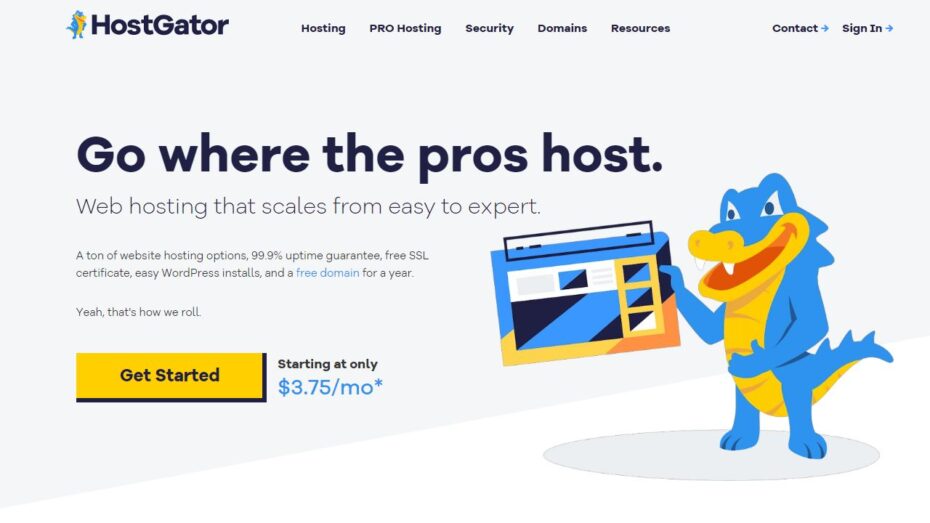 Hostgator
| 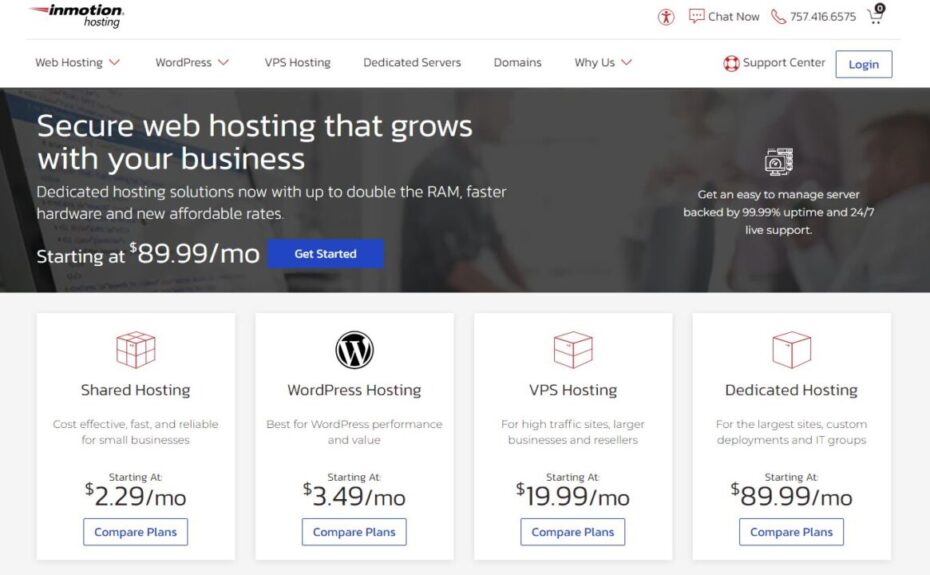 Inmotion
|  Hostinger
|
Leveraging Web Development Skills to Build Profitable Websites
With the right web development skills, creating profitable websites becomes a tangible reality. The first step is to identify a niche or market need that can be addressed through a web-based solution. This could involve creating an e-commerce platform, a subscription service, or an informational site that generates revenue through advertising and affiliate marketing. My advice is to conduct thorough market research to validate your idea before diving into development.
SEO and user experience (UX) are critical components of a profitable website. Developing with SEO in mind from the outset ensures that your site is visible to search engines and can attract organic traffic. Similarly, a focus on UX design ensures that visitors have a positive experience on your site, which is crucial for conversion rates. According to my estimation, websites that prioritize both SEO and UX from the early stages of development are more likely to succeed in the competitive online marketplace.
Finally, monetizing a website effectively requires a strategic approach to content, marketing, and analytics. Quality content that engages and provides value to your target audience is the foundation of a profitable website. Coupled with effective digital marketing strategies to drive traffic and robust analytics to track performance, web developers can turn their skills into a lucrative business venture. From my perspective, the key to success lies in continuously optimizing and refining your website based on data-driven insights, ensuring that it meets the evolving needs of your audience and stays ahead of the competition.
Seize the Opportunity: Embark on Your Journey to Online Wealth
As we’ve navigated through the myriad of ways to make money online, it’s clear that the digital world is brimming with opportunities for those ready to seize them. From affiliate marketing to web development, each avenue offers a unique path to financial independence and success. However, the journey to online wealth is not just about choosing the right path; it’s about dedication, innovation, and a willingness to learn and adapt. The landscape of online business is ever-changing, and staying ahead requires a commitment to continuous improvement and strategic thinking.
Embarking on your journey to online wealth starts with identifying your strengths and interests. Whether you’re drawn to the creativity of digital product creation, the analytical challenges of SEO, or the interactive nature of social media marketing, there’s a niche that’s perfect for you. My advice is to start with something you’re passionate about. Passion not only fuels perseverance but also inspires innovation and excellence. Remember, the most successful online entrepreneurs are those who love what they do and do what they love.
Finally, it’s important to approach your online ventures with a mindset of growth and learning. The road to success is paved with challenges and setbacks, but it’s these very obstacles that provide the greatest opportunities for growth. I recommend adopting a flexible approach, being open to new ideas and feedback, and never being afraid to pivot your strategy when necessary. According to my experience, the most rewarding part of the journey is not just the wealth you accumulate but the knowledge and personal growth you gain along the way.
In closing, the opportunity to build wealth online is within reach for anyone willing to put in the effort and dedication. From my point of view, the key to success lies in choosing a path that aligns with your passions and strengths, continuously evolving your skills, and staying adaptable in the face of change. So, what if I told you that your journey to online wealth could start today? It’s a journey filled with endless possibilities and potential. Seize the opportunity, embark on your adventure, and who knows where it might lead you.
frequently asked questions (FAQ)
What is the best way to start making money online?
To start making money online, identify your skills and interests. Popular options include freelancing, affiliate marketing, blogging, dropshipping, and selling digital products. Choose a niche, research your market, and begin with small, manageable projects to build experience and credibility.
How can I make money through affiliate marketing?
Affiliate marketing involves promoting products or services and earning a commission for each sale made through your referral link. To succeed, choose reputable affiliate programs, create valuable content, and use effective marketing strategies to drive traffic to your links.
Is blogging a viable source of income?
Yes, blogging can be a significant source of income if done correctly. It involves creating high-quality content that attracts readers. Monetization methods include display ads, sponsored posts, affiliate marketing, and selling digital products or services.
What are the most profitable freelancing skills?
High-demand freelancing skills include web development, graphic design, digital marketing, content writing, and video editing. These skills are sought after in various industries, making them profitable options for freelancers.
How does dropshipping work?
Dropshipping is a retail fulfillment method where you don’t keep products in stock. Instead, when you sell a product, you purchase it from a third party and have it shipped directly to the customer. This model reduces upfront costs and inventory risks.
What are the benefits of selling digital products online?
Selling digital products, such as e-books, online courses, and software, offers high profit margins since there are no production or shipping costs. Digital products can be sold repeatedly without additional inventory expenses, making them a scalable income source.
How can I maximize earnings through email marketing?
Maximize earnings by building a targeted email list, creating valuable and engaging content, and using segmentation to personalize your messages. Effective strategies include offering exclusive deals, nurturing relationships with subscribers, and using automation to streamline campaigns.











